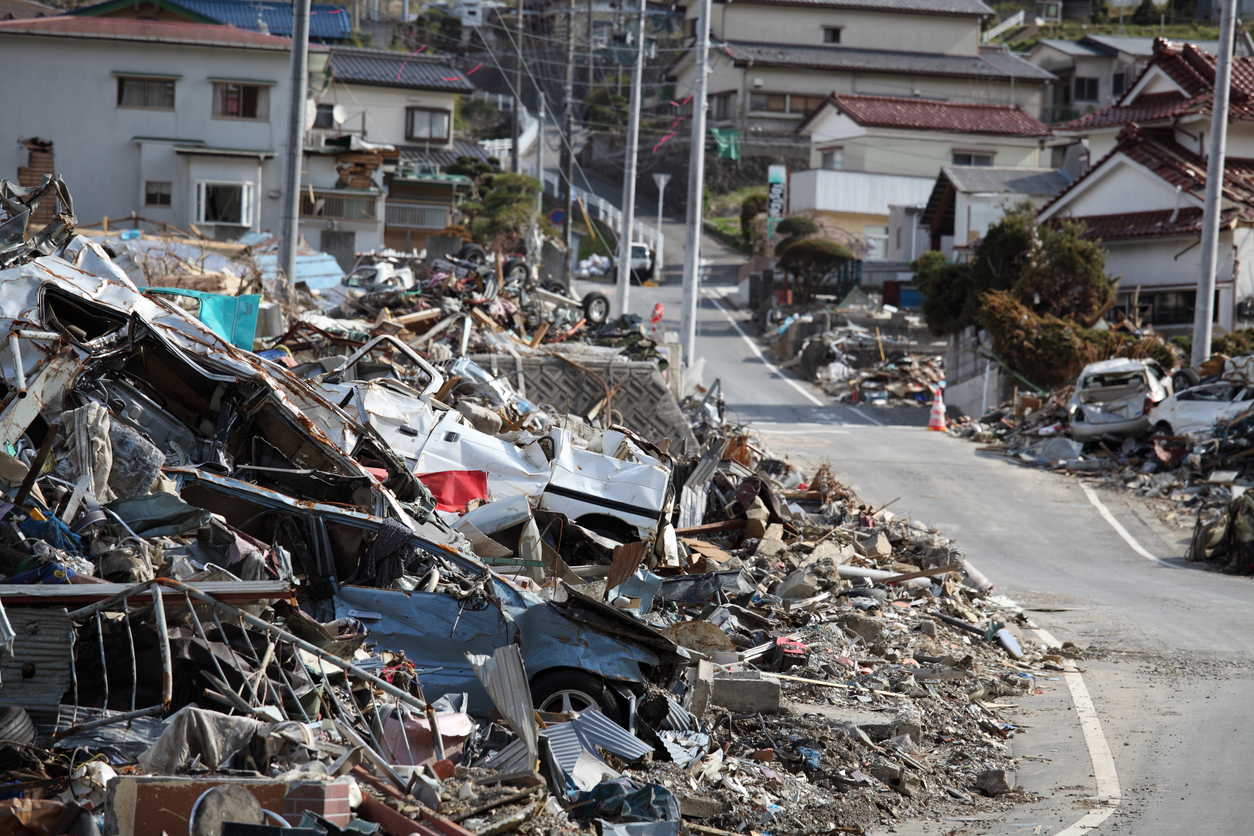2023/05/30
Reconstruction and Revitalization after the Great East Japan Earthquake are Still on the Way; Go Back to “3.11” Again to Think about Our Future

Twelve years have passed since the Great East Japan Earthquake, and reconstruction projects related to infrastructure such as housing, transportation, and industrial facilities have nearly been completed. According to the data provided by the Reconstruction Agency, residential land development to construct public housing for disaster victims through relocation to higher ground has finished by the end of 2020. Moreover, the maintenance of reconstruction roads and reconstruction support roads of 570 km has been completed, and the railroad has also been restored. The total area of cropland available for restarting agricultural business has recovered to 95% of the level before the earthquake. Further, fishing harbors have regained their functions, and 98% of fish processing facilities have resumed their operations. Also, 100% of the rubble on fixed fishing grounds in the disaster area has been cleaned up.
Development of next-generation industrial infrastructure is also in progress. International-level advanced research facilities will expand the growth potential of Tohoku region. Such advanced research facilities include “NanoTerasu,” a next-generation synchrotron radiation facility in Sendai City, Miyagi Prefecture, of which we, Yano Research Institute Ltd., supported the promotion of utilization; “Fukushima Robot Test Field” (RTF) in Minamisoma City, Fukushima Prefecture; and “Fukushima Hydrogen Energy Research Field” (FH2R) in Namie Town, Fukushima Prefecture. Further, “Michinoeki Sansan Minamisanriku,” a large-scale facility with a museum and a community center to pass on the memories of the earthquake to the future generations, opened in October 2022, aiming to promote the region and expand the number of visitors from other regions.
On the other hand, a sense of unity with people in the disaster area has gradually been weaker. This trend is most clearly represented by the “diversion” of reconstruction funds to defense expenditures. The idea that there is no problem if the total amount is adjusted by extending the collection period indicates a regression in the order of priorities. The policy related to nuclear energy has also modified including the permission of new and additional construction of nuclear power plants and abolishment of the 60-year operating limit for reactors. Has there been enough scientific debate when making national policy decisions that involve intergenerational responsibility? Has it been an open discussion? Has the unprecedented impact of the simultaneous core meltdown of three nuclear reactors, that people all over Japan took as their personal issue, already faded away after 12 years and in the face of the energy crisis that began last year?
It has now been 12 years since “that day.” However, even currently, the number of evacuees totals more than 30,000. Nuclear decommissioning will take another 30 to 40 years, and the plan on how the plants eventually should be has not yet been determined. According to the data provided by the Board of Audit of Japan, the rate of completion of the Plans for Reconstruction and Revitalization for Special Zones to place reconstruction bases in the areas of “difficult-to-return zones” remained at 13.8% as of June 2022. Moreover, in a survey conducted by the Reconstruction Agency, more than 50% of the respondents who used to live in the Tomioka, Futaba, and Namie answered that they would not return to their hometown. The restoration of their homeland is far from achievement. The reputational damage of primary industries also remains. The impact of the earthquake still exists. Therefore, I would like to go back to "that day" when I saw the revitalization of Japan in the recovery of the disaster area, recall my determination of that time, and once again consider how the future should be and how disaster prevention should be handled. As the saying goes, “natural disasters occur when we least expect them.”
This Week’s Focus, March 17
Takashi Mizukoshi, the President